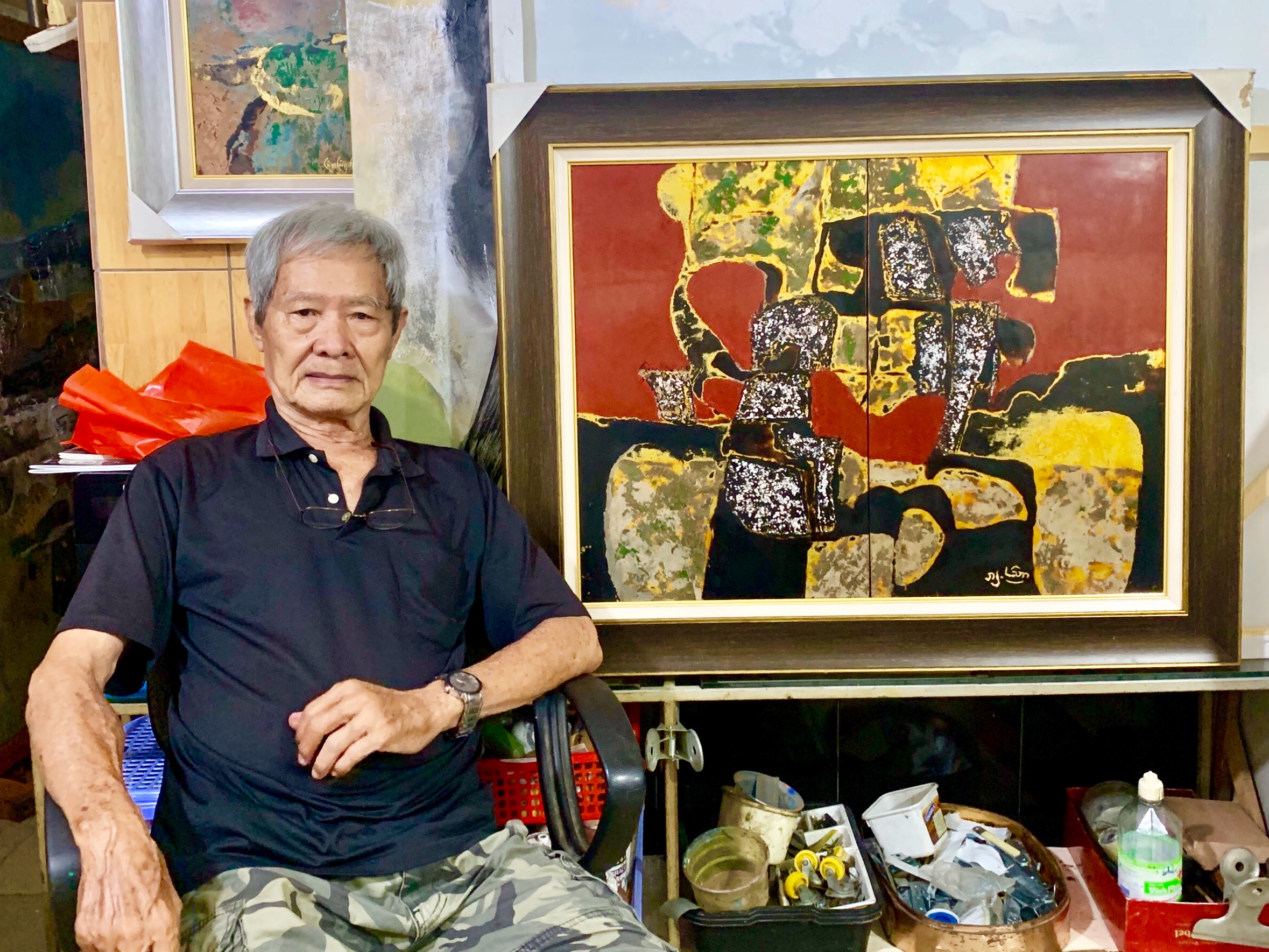Vietnam master Nguyen Lam
Early Life
Nguyen Lam was born in the city of Can Tho, Vietnam in 1939. His parents, Lam Van Thi and Nguyen Thi Hut were mechanical engineers .
Nguyen Lam began his art education in 1956 at Gia Dinh College in Ho Chi Minh city. Eventually he graduated from Saigon National Art College in 1965, specialising in oil paintings
Nguyen Lam also studied Vietnamese lacquer art, silk artwork, architectural art, ink on paper, sculpture, sketching and more.
Nguyen Lam was mentored by Le Van De, his professor and also the principle of the first fine art college in Hanoi; Dong Duong Fine Art College where he taught silk painting.
Artistic career
While studying, he met the Chinese artist Dai Wanjun when he was in Vietnam. Dai Wanjun is a skilled in watercolour painting and calligraphy penmanship. Nguyen Lam was inspired by the strength and liveliness that calligraphy exhibits.
Meditation is an integral part of Nguyen Lam’s artistic process. To him, his paintings are an exercise in spirituality; a manifestation from the internal energy of the artist and the vitality of life itself. He views every painting as a journey and embarks upon it by first meditating in front of a blank canvas. When meditation yields artistic creation through a surge in emotion and energy, he projects it onto the canvas and begins his journey.
Nguyen Lam is a great admirer of the late artist, Nguyễn Gia Trí. The French consulate in Vietnam planned to restore Nguyen Gia Tri’s lacquer painting “Vuon Xuan” for long but could not find a suitable artist. On the recommendation of French artist Remy Jullien, the French Consul General, Fabrice Maurie selected Nguyen Lam due to Lam’s artistic skills and more than 50 years of experience working with lacquer.
Nguyen Lam and his children, who are also artists, worked every day for three months to complete the restoration. Upon completion, he was then asked to restore three more Nguyen Gia Tri masterpieces by the Ho Chi Minh City General Science Library.
Recognition and Accolades
For decades, Vietnamese art suffered a distinct lack of artistic inspiration. Oriental characteristics were attributed as a source of inspiration, but they were essentially a form of allegiance to China and Japan. Otherwise, Vietnamese art was a tributary of European art owing to the Ecole des Beaux Arts de L’indochine, the fine arts university in Hanoi established under the French rule in 1925.
There was a concerted push to promote a progressive artistic movement and in 1973, Nguyen Lam was recognised as one of the 15 up and coming artists who were bringing Vietnamese art in a more authentic and unique direction, creating paintings that answered to the Vietnamese reality.
Nguyen Lam artistic evolution primarily involved the mix and use of colours; shifting from the contrasts of yellow and orange tones on a black background to grey/blue and grey/pink tones. During this time, he also moved from paintings of poor families and manual labourers to abstractionism.
In 1962 he received a certificate of honour from the first International Art Exhibition in Saigon, organised by the government of South Vietnam. He was also awarded a Silver medal from Nguyen Van Thieu, President of South Vietnam at the Spring Exhibition.
In 1965, he received a Bronze medal at an exhibition organised by the Directorate of Catholic Chaplain.

